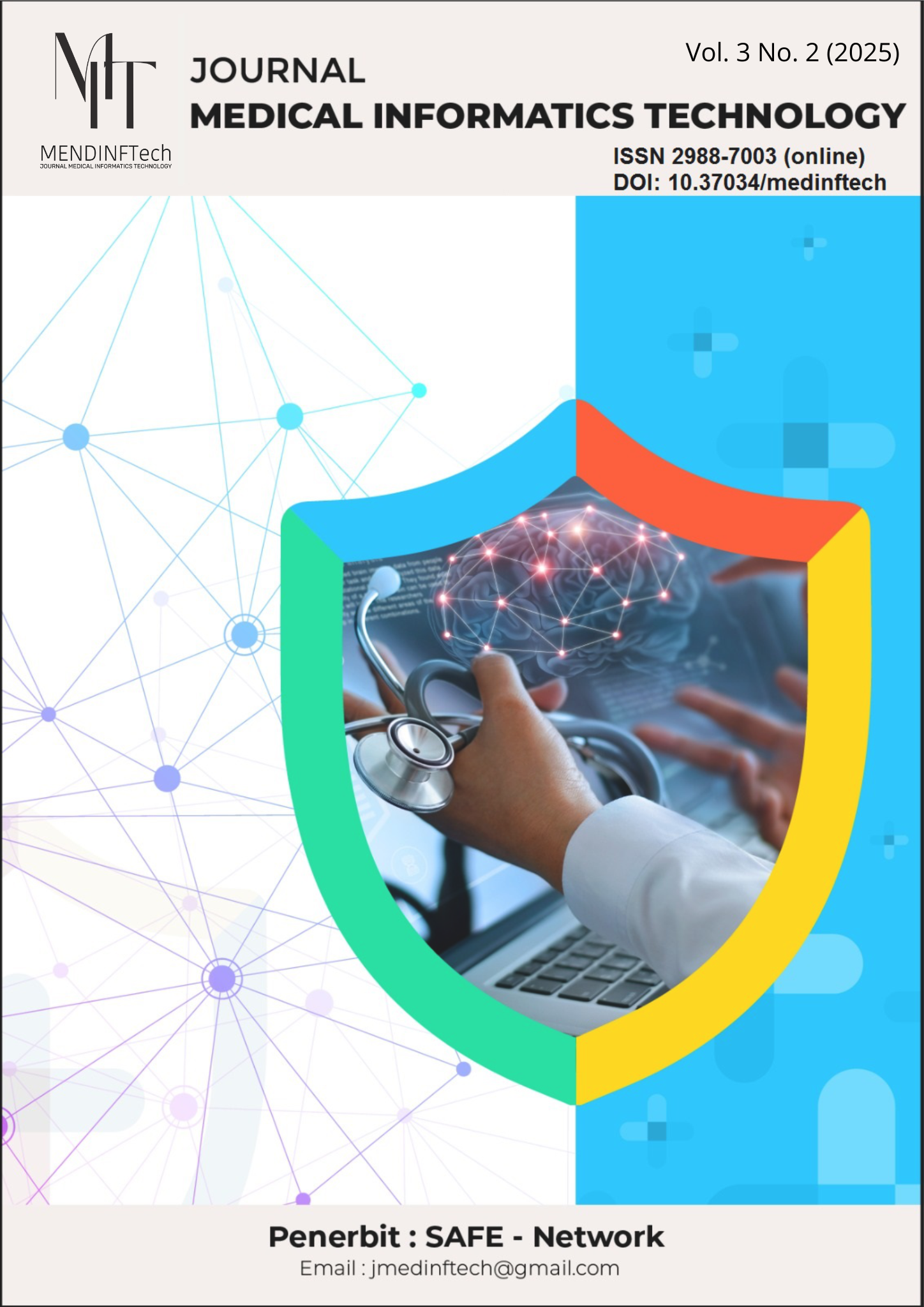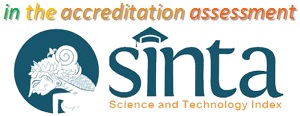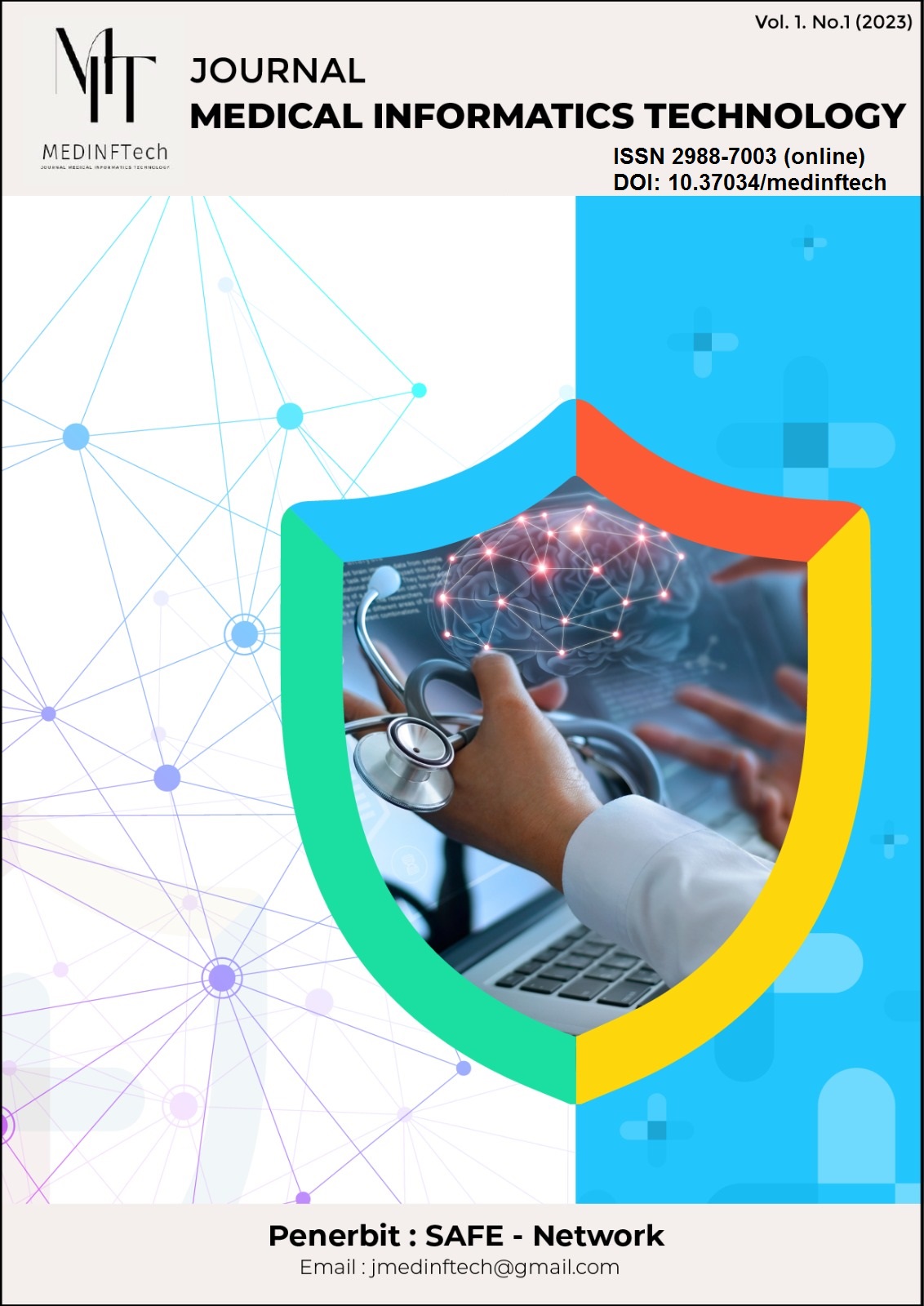The role of Salmon DNA in Skin Regeneration and Anti-Aging
DOI:
https://doi.org/10.37034/medinftech.v3i2.95Keywords:
Anti-Aging, Polydeoxyribonucleotide (PDRN), Salmon DNA, Skin Regeneration, Wound HealingAbstract
Salmon DNA, particularly its polydeoxyribonucleotide (PDRN) content, has attracted attention in dermatology due to its potential in skin regeneration and anti-aging applications. This review aims to summarize various research findings on the effectiveness of PDRN. The study was conducted through a literature review of articles published between 2016 and 2023. Findings indicate that PDRN works by activating adenosine A2a receptors, stimulating angiogenesis, cell proliferation, and reducing inflammation. Its combination with vitamin C and niacinamide enhances antioxidant effects and helps preserve the extracellular matrix. Furthermore, the use of long-chain polynucleotide fillers has been shown to significantly improve pore size, skin texture, wrinkles, and sagging, with minimal side effects. In conclusion, PDRN from salmon DNA is a promising bioactive agent for skin rejuvenation, wound healing, and anti-aging therapy in modern dermatological practice.
Downloads
References
M. Cavallini, C. De Luca, G. Prussia, and M. Raichi, “PN- HPT® (Polynucleotides Highly Purified Technology) in facial middle third rejuvenation. Exploring the potential,” J. Cosmet. Dermatol., vol. 21, pp. 615–624, 2022, doi: 10.1111/jocd.14578.
G. jiahong, F. wei, and W. feifei, “An injectable hyaluronic acid-Polydeoxyribonucleotides (HA-PDRN) crosslinked hydrogel as a dermal filler,” Eur. Polym. J., vol. 219, p. 113395, 2024, doi: https://doi.org/10.1016/j.eurpolymj.2024.113395.
G. Y. Park and B. Jang, “Polydeoxyribonucleotide as a Regenerative Agent in Dermatology and Wound Healing : Mechanisms , Clinical Applications , and Safety,” Keimyung Med. J., 2025, doi: 10.46308/kmj.2025.00115.
T.-H. Kim, S.-Y. Heo, G.-W. Oh, S.-J. Heo, and W.-K. Jung, “Applications of Marine Organism-Derived Polydeoxyribonucleotide: Its Potential in Biomedical Engineering.,” Mar. Drugs, vol. 19, no. 6, May 2021, doi: 10.3390/md19060296.
M. Galeano et al., “Polydeoxyribonucleotide: A Promising Biological Platform to Accelerate Impaired Skin Wound Healing,” Pharmaceuticals, vol. 14, no. 11, 2021, doi: 10.3390/ph14111103.
H. M. Kim et al., “A Mixture of Topical Forms of Polydeoxyribonucleotide, Vitamin C, and Niacinamide Attenuated Skin Pigmentation and Increased Skin Elasticity by Modulating Nuclear Factor Erythroid 2-like 2,” Molecules, vol. 27, no. 4, pp. 1–20, 2022, doi: 10.3390/molecules27041276.
K. S. Lee et al., “Analysis of Skin Regeneration and Barrier-Improvement Efficacy of Polydeoxyribonucleotide Isolated from Panax Ginseng (C.A. Mey.) Adventitious Root,” Molecules, vol. 28, no. 21, 2023, doi: 10.3390/molecules28217240.
F. Fernández-Varela-Gómez, A. Sandoval-García, and K. V. Cabrera-Rios, “Signs of skin aging: a review,” Int. J. Res. Med. Sci., vol. 12, no. 7, 2024, doi: 10.18203/2320-6012.ijrms20241935.
S. M. Shin, E. J. Baek, K. H. Kim, K. J. Kim, and E. J. Park, “Polydeoxyribonucleotide exerts opposing effects on ERK activity in human skin keratinocytes and fibroblasts,” Mol. Med. Rep., vol. 28, no. 2, pp. 1–10, 2023, doi: 10.3892/mmr.2023.13035.
T. K. Noh et al., “Novel Anti-Melanogenesis Properties of Polydeoxyribonucleotide, a Popular Wound Healing Booster,” Int. J. Mol. Sci., vol. 17, no. 9, pp. 1–11, 2016, doi: 10.3390/ijms17091448.
H. Snyder, “Literature review as a research methodology: An overview and guidelines,” J. Bus. Res., vol. 104, no. March, pp. 333–339, 2019, doi: 10.1016/j.jbusres.2019.07.039.
N. R. Haddaway, A. M. Collins, D. Coughlin, and S. Kirk, “The role of google scholar in evidence reviews and its applicability to grey literature searching,” PLoS One, vol. 10, no. 9, pp. 1–17, 2015, doi: 10.1371/journal.pone.0138237.
S. Geahcahan, P. Baharlouei, and A. Rahman, “Marine Collagen: A Promising Biomaterial for Wound Healing, Skin Anti-Aging, and Bone Regeneration,” Mar. Drugs, vol. 20, no. 61, pp. 1–16, 2022, doi: 10.3390/md20010061.
A. Khan et al., “Polydeoxyribonucleotide: A promising skin anti-aging agent,” Chinese J. Plast. Reconstr. Surg., vol. 4, no. 4, pp. 187–193, 2022, doi: 10.1016/j.cjprs.2022.09.015.
K. Y. Park, J. Seok, N. K. Rho, B. J. Kim, and M. N. Kim, “Long-chain polynucleotide filler for skin rejuvenation: efficacy and complications in five patients,” Dermatol. Ther., vol. 29, no. 1, pp. 37–40, 2016, doi: https://doi.org/10.1111/dth.12299.









